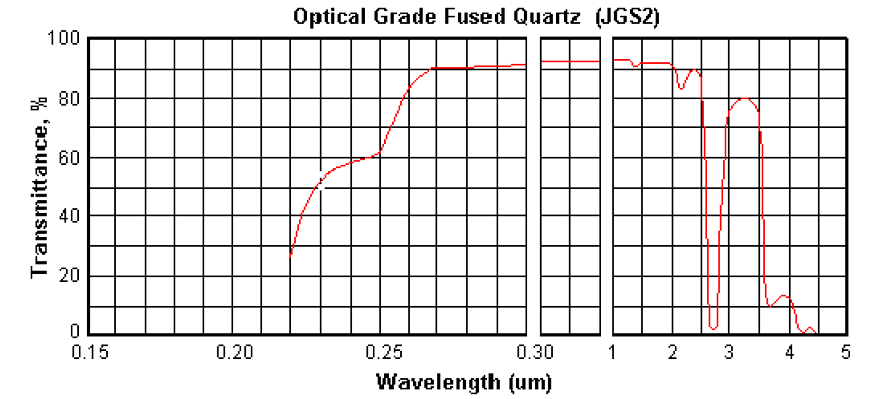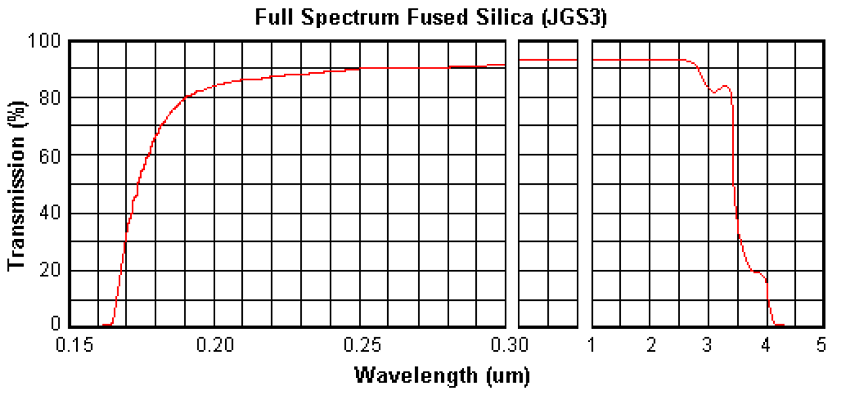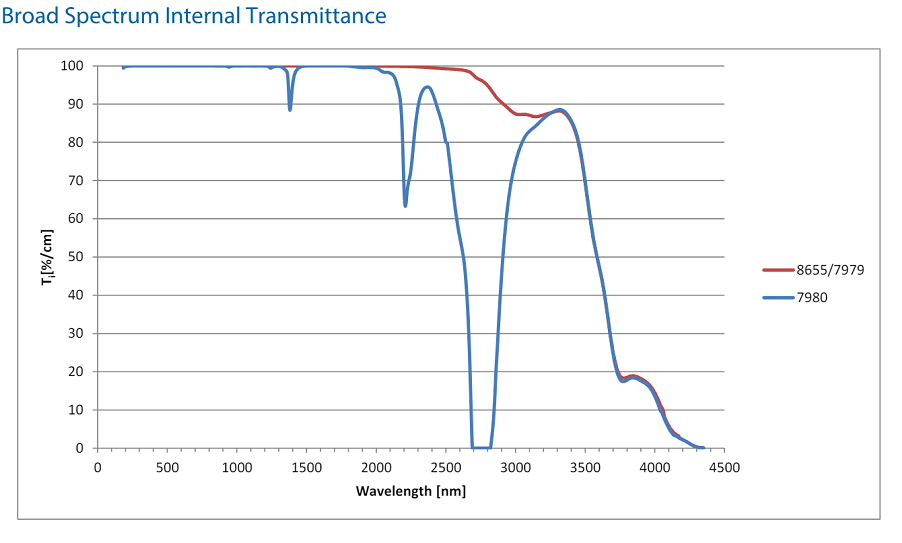A wide range of fused silica materials
High purity and low fluorescence
Applied to ultraviolet, visible light, near infrared
High-quality optical coating
Customized available
Prototype to mass production
Fused silica or fused quartz has good thermal stability. Fused silica lenses or fused quartz lenses have excellent properties and chemical purity. They have excellent transmission and adapt to high operating temperatures. These fused silica lenses are the first choice in many areas of laser and imaging applications, especially those used in UV wavelength regions.
He Rui Optics can produce various of high-quality fused silica lenses made from UV grade fused silica glass and IR grade fused silica glass.
Commonly available materials are Chinese JGS1, JGS2, JGS3, Corning 7980, 7979,8655 ,SK1300, SK1310 and so on.
Corning 7980 is high purity non crystalline silica glass that features very low refractive index variations. It has exceptional transmittance from deep ultraviolet through the infrared region. Homogeneity is certified both in use-axis AA, A, C, F as well as off-axis. At 589.3nm, the index of refraction is 1.45840. Density is 2.20 g/cm3, and Knoop hardness 522 kg/mm. The tensile strength is 54 MPa at 25 degrees Celsius.
Heraeus fused silica is available in different options for applications in UV, IR, Vis, or broadband spectrum. This noncrystalline isotopic glass is produced with the highest standards in purity and substrate homogeneity.
JGS1 is suitable for transmission deep into the UV range. This ultraviolet grade fused silica, a synthetic amorphous silicon dioxide, is equivalent to Corning 7950 or Heraeus Suprasil 1 and 2. It has no absorption bands in the 170-250 nm interval, but does have an intensive OH absorption band in wavelength 2600-2800 nm. It is a high quality glass with practically no bubbles or inclusions.
JGS2 is suitable for light transmission between 220 and 2500nm. It is widely used in the solar industry and for semiconductors. It has only tiny bubbles, but more than JGS1. OH content is about 120 ppm.





| Dimensions: | Diameters 1mm to 300mm |
| Squares/rectangles 10mm x 10mm to 200mm x 200mm | |
| Thickness Range: | 1.50mm to 20mm thick |
| Surface Quality: | 80/50 to 20/10 scratch/dig |
| Surface Flatness: | Up to lambda 4 (@633nm) |
| Material Options: | Optical glasses, Fused Silica, Fused Quartz, Borosilicate, & Sapphire |
| Coating Options: | AR optical coatings or as per your requirement |
| Options: | Angled bevels, chamfers & faces drilled |
| Different Properties | |||
| Parameter | JGS1 | JGS2 | JGS3 |
| Transmission Range (Medium transmission ratio) | 0.17~2.10um | 0.26~2.10um | 0.185~3.50um |
| (Tavg>90%) | (Tavg>85%) | (Tavg>85%) | |
| OH- Content | 1200 ppm | 150 ppm | 5 ppm |
| Fluorescence (ex 254nm) | Virtually Free | Strong v-b | Strong V-B |
| Impurity Content | 5 ppm | 20-40 ppm | 40-50 ppm |
| Birefringence Constant | 2-4 nm/cm | 4-6 nm/cm | 4-10 nm/cm |
| Melting Method | Synthetic CVD | Oxy-hydrogenmelting | Electrical |
| melting | |||
| Applications | Laser | Semiconductor | IR & UV |
| substrate:Window, lens, prism, telescope mirror. | and high temperature | substrate | |
| window, telescope mirror | |||
| Substitute | Suprasil 1 and Corning 7980 | Homosil 1, 2&3 | Suprasil 300 |
| Wavelength Range | Substrate Material |
| 180nm-8.0μm | Calcium Fluoride (CaF2) |
| 185 nm-2.1 um | UV Fused Silica |
| 200 nm- 5.0 um | Sapphire |
| 200 nm- 6.0 um | Magnesium Fluoride (MgF2) |
| 220 nm to >50 um | CVD Diamond Windows |
| 230 nm- 1.1 um | UV Fused Silica. Textured Antireflective surface |
| 250 nm- 1.6 um | UV Fused Silica, for 45° AOI |
| 250 nm- 26 um | Potassium Bromide (KBr) |
| 350 nm- 2.0 um | N-BK7 |
| 600 nm- 16 um | Zinc Selenide (ZnSe) |
| 1.2- 8.0 um | Silicon (Si) |
| 1.9- 16 um | Germanium (Ge) |
| 2- 5 μm | Barium Fluoride (BaF2) |